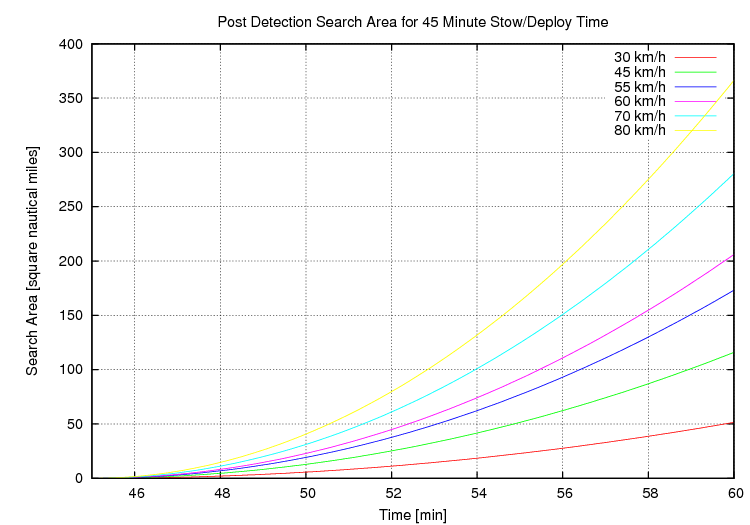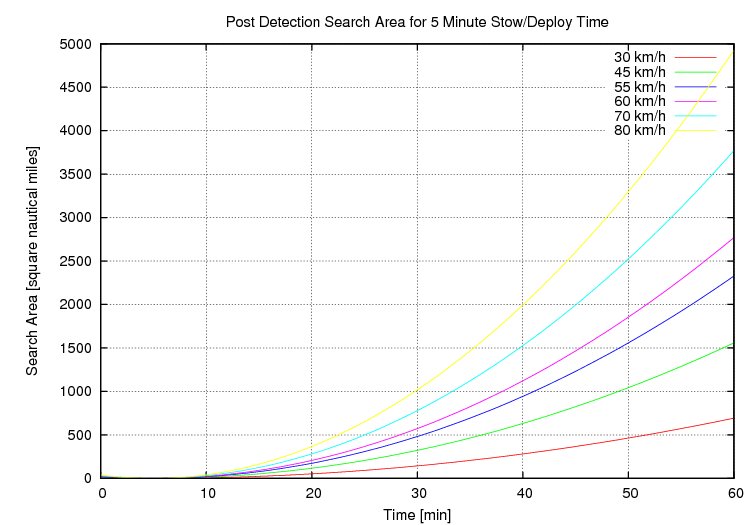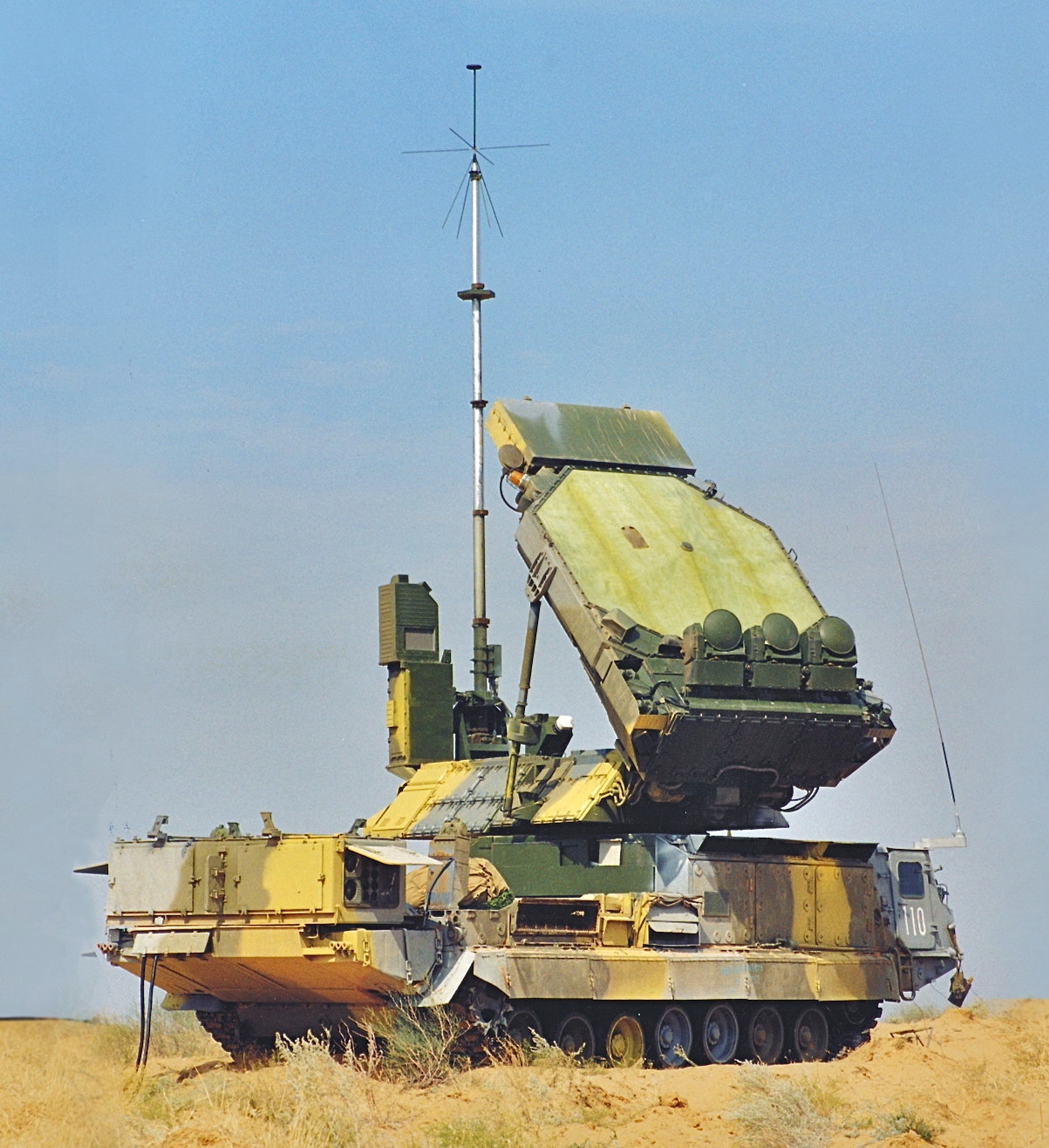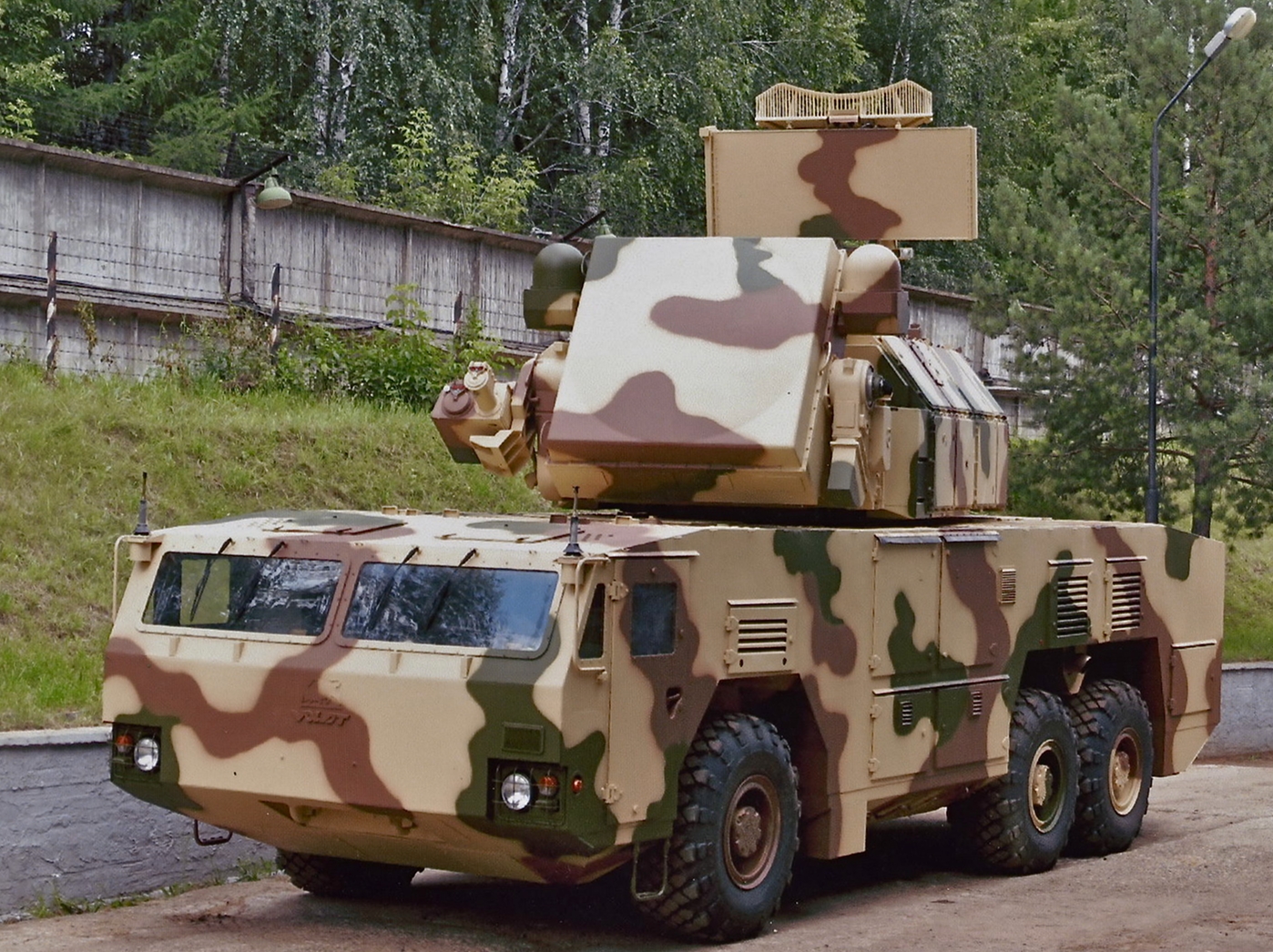|
||||||||||||||||||||||
![Home - Air Power Australia Website [Click for more ...]](APA/APA-Title-Main.png) |
||||||||||||||||||||||
![Sukhoi PAK-FA and Flanker Index Page [Click for more ...]](APA/flanker.png) |
![F-35 Joint Strike Fighter Index Page [Click for more ...]](APA/jsf.png) |
![Weapons Technology Index Page [Click for more ...]](APA/weps.png) |
![News and Media Related Material Index Page [Click for more ...]](APA/media.png) |
|||||||||||||||||||
![Surface to Air Missile Systems / Integrated Air Defence Systems Index Page [Click for more ...]](APA/sams-iads.png) |
![Ballistic Missiles and Missile Defence Page [Click for more ...]](APA/msls-bmd.png) |
![Air Power and National Military Strategy Index Page [Click for more ...]](APA/strategy.png) |
![Military Aviation Historical Topics Index Page [Click for more ...]](APA/history.png)
|
![Intelligence, Surveillance and Reconnaissance and Network Centric Warfare Index Page [Click for more ...]](APA/isr-ncw.png) |
![Information Warfare / Operations and Electronic Warfare Index Page [Click for more ...]](APA/iw.png) |
![Systems and Basic Technology Index Page [Click for more ...]](APA/technology.png) |
![Related Links Index Page [Click for more ...]](APA/links.png) |
|||||||||||||||
![Homepage of Australia's First Online Journal Covering Air Power Issues (ISSN 1832-2433) [Click for more ...]](APA/apa-analyses.png) |
||||||||||||||||||||||
| Last Updated: Mon Jan 27 11:18:09 UTC 2014 | ||||||||||||||||||||||
|
||||||||||||||||||||||
| SAM
System
Mobility Russian and PLA Air Defence System Vehicles Technical Report APA-TR-2008-0601 |
|||||||||||||||||||||||||||||||||||||||||||||||||||||||||||||||||||||||||||
by Dr Carlo Kopp, AFAIAA, SMIEEE, PEng June, 2008 Updated July, 2010 Updated May, 2011 Updated April, 2012 Text © 2008 - 2012 Carlo Kopp 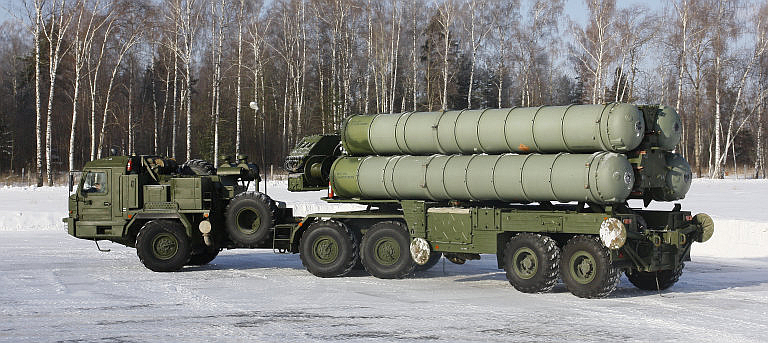 New
BAZ-6402 towed 5P85TM/TE2 TEL design common to S-400 and S-300PMU2 (©
2010, Yevgeniy
Yerokhin, Missiles.ru).
|
|||||||||||||||||||||||||||||||||||||||||||||||||||||||||||||||||||||||||||
IntroductionThe subject of Air Defence System Vehicles, examples being Transporter Erector Launcher and Radar (TELAR), Transporter Erector Launcher (TEL) and TransLoader (TL) vehicles, or radar vehicles, receives far less attention in contemporary Western defence analysis than it merits. This is particularly unfortunate given the rapid growth in the mobility of Russian and PLA IADS elements over the last decade, and the introduction of a new generation of wheeled and hardened vehicles. We are observing a deep transformation in the manner of IADS deployment with commensurate improvements in IADS survivability. Perhaps the most famous quote by Generaloberst Heinz Wilhelm ‘Schnelle Heinz’ Guderian is: “Der Motor des Panzers ist ebenso seine Waffe wie die Kanone” i.e. “The engine of a tank is as much a weapon as the cannon”. The corollary of Guderian's saying is simply that “the mobility of a SAM, SPAAG or SPAAGM system is as important as the lethality of its missile or gun system”. Mobility matters for two reasons, the first being battlespace mobility or the ability of the system to “hide, shoot and scoot” evading defence suppression weapons, and the second being the system's deployability or ability to redeploy locally, across a theatre, or between theatres. Unlike Integrated Air Defence Systems (IADS) of the past which relied heavily on fixed communications landlines, or fixed microwave repeater links, modern systems are linked by radiofrequency, typically microwave or VHF/UHF, datalinks or indeed networks. The principal determinant of the system's mobility and deployability is then the design of the vehicles carrying the system. Broadly air defence weapons can be divided into fixed, semi-mobile, and mobile systems. Fixed systems are typically installed on concrete pads or other hardened or semihardened structures. This strategy of air defence weapon deployment is largely extinct due to the lethality of anti-radiation missiles and other weapons deployed by SEAD/DEAD tasked combat aircraft. Semi-mobile systems are typically moved by road, with launchers and other components carried by trailers, or built as trailers. Such systems will take between 30 minutes and several hours to deploy or stow, and are characteristic of 1960s technology Soviet PVO weapons. Like fixed systems, their survivability has proven to be poor, as evidenced by losses in Vietnam, the Middle East, Operation Desert Storm and Operation Allied Force. Nevertheless, the large number of legacy Soviet systems in use indicates that such weapons will still be encountered. Fully mobile systems may be road mobile, or off-road mobile, the former using wheeled vehicles, the latter wheeled or tracked vehicles. In general tracked vehicles have better survivability than wheeled vehicles against the full range of air delivered weapons, and land force weapons. In general tracked vehicles provide by far the best off road mobility, due to the low surface loading of tracks, the ability to perform pivot turns, and the ability to scale obstacles and cross ditches. The drawbacks of tracked vehicles are often considerably higher operating costs, longer time to repair a broken track compared to a punctured wheel, and usually lower roadspeed. Often tracked vehicles will be heavier than their wheeled counterparts, limiting options in airlift. Where off road mobility is not regarded to be critical, military trucks and tow tractors in the 10 to 20 tonne class have been used most frequently for this purpose, often towing the air defence weapon in a semitrailer or trailer arrangement. The compromise between tracked and standard truck based systems are specialised high off road mobility vehicles purposed designed for the carriage of missiles. The 8 x 8 and 6 x 6 vehicles produced by MAZ/MZKT over the last five decades, and the contemporary BZKT built replacements, represent the best examples. The MAZ-543 family of 8 x 8 heavy trucks has been used to carry ballistic missiles, ground launched strategic cruise missiles, antiship cruise missiles, air defence gun systems, air defence missile systems, as well as the Soviet High Energy Laser Directed Energy Weapon system. It has also been used to carry or tow a number of different radar systems, and associated mast systems. These Technical Reports are intended to provide a basic reference covering the most widely used vehicles in this application. |
|||||||||||||||||||||||||||||||||||||||||||||||||||||||||||||||||||||||||||
Quantifying
the
Air
Defence System Mobility Problem
|
|||||||||||||||||||||||||||||||||||||||||||||||||||||||||||||||||||||||||||
| Vehicle
Type |
Max
Road
Speed
[km/h] |
Cruise
Road
Speed
[km/h] |
Systems |
Notes |
| BAZ-6402 |
70.0 |
- |
SA-21 SA-20B Gargoyle 64N6 Gamma SE |
|
| BAZ-6909 |
80.0 |
- |
SA-21 SA-20B Gargoyle SA-22 Greyhound 55Zh6M Nebo M |
|
| BAZ-69096 |
50.0 |
- |
SA-23 / S-300VMK |
|
| MAZ-543/7910 |
60.0 |
45.0 |
SA-10B Grumble SA-20A Gargoyle SA-20B Gargoyle |
|
| MAZ-537 |
55.0 |
- |
40V6M/MD Masts |
SA-10, 20, 21 |
| KrAZ-260 |
80.0 |
- |
SA-10B Grumble SA-20A Gargoyle SA-20B Gargoyle |
|
| Ural-375 |
75.0 |
- |
9T33 Transporter P-15M Squat Eye P-15/19 Flat Face 1L119 Nebo SVU |
|
| MZKT-6922 |
80.0 |
- |
SA-15 Gauntlet SA-17 Grizzly SA-8 Gecko (Osa-T) T38 Stilet |
|
| MZKT-8022 |
60.0 |
- |
SA-3 Goa Upgrade |
|
| KAMAZ
6560 |
70.0 |
- |
SA-22 Greyhound | |
| MT-T |
65.0 |
- |
SA-12B Giant SA-12A Gladiator SA-23 |
|
| GM5955 |
65.0 |
- |
SA-15 Gauntlet SA-19 Grison |
|
| GM352M1E |
65.0 |
- |
SA-22 Greyhound | |
| BAZ-5937 |
80.0 |
- |
SA-8 Gecko |
While many Cold War era systems were limited
in sustained transit speeds to 45.0 km/h, more recent wheeled designs
are mostly built for much faster sustained road speeds.
The systematic design of all Russian built
IADS components for a “hide, shoot and scoot” regime of operations is
resulting in pervasive changes to the character of future IADS,
producing significant long term pressure to engage a SAM battery on
initial contact. This in turn requires SEAD/DEAD aircraft with the
survivability to loiter in contested airspace, or ISR assets with equal
survivability. Platforms with lower survivability will suffer
unsustainable loss rates in battle with high mobility modern IADS.
Russian and PLA Air Defence System Mobility Summary
| Mobility Category: | Highly
Mobile |
Mobile |
Semi-Mobile |
Static |
||
| Stow/Deploy Time: |
2-10
min |
10-60
min |
60-120
min |
120+ min |
||
9S32
Grill
Pan deployed on MT-T series tracked vehicle
(NIEMI image).
Russian
and PLA Air Defence System
Vehicle Technical Reports
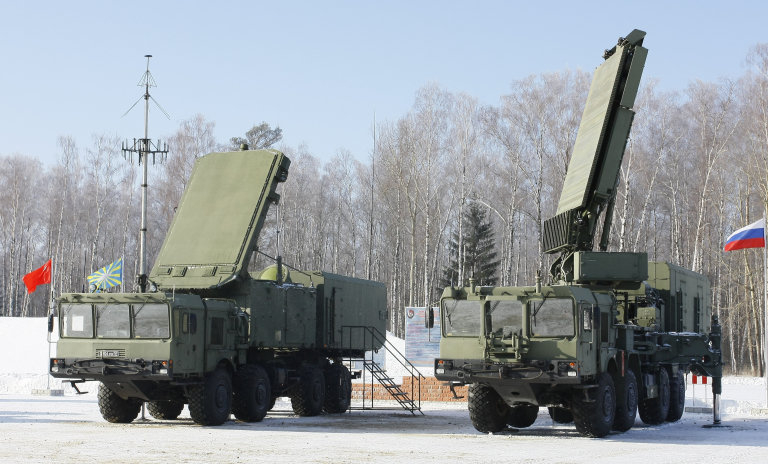
S-400
Triumf
/
SA-21
battery
92N6
Grave
Stone and 96L6 radars deployed on high mobility MZKT-7930
vehicles, evolved from the MAZ-543 Uragan Scud TEL chassis. The LEMZ
96L6E is common to the late
production S-300PMU2 Favorit / SA-20B Gargoyle exported to the PRC
(©
2010, Yevgeniy
Yerokhin, Missiles.ru).
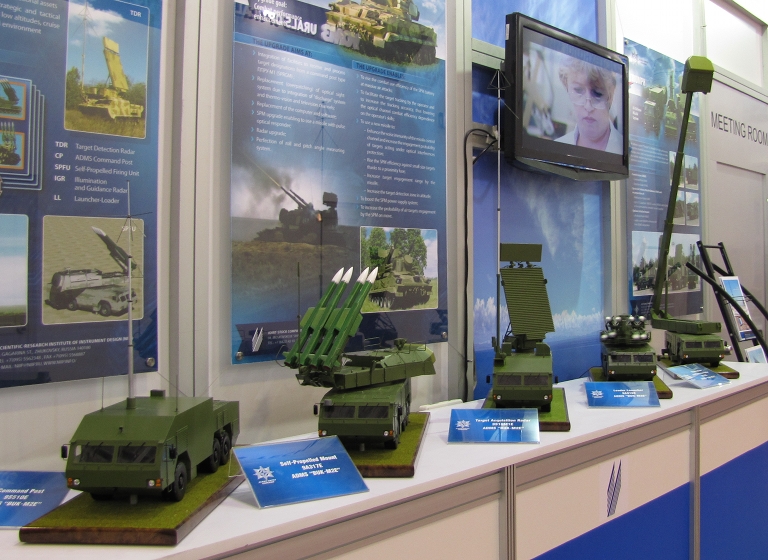

9K317E
Buk
M2E
/
MZKT-6922
/
SA-17
Grizzly
battery
component
models
at
Zhuhai 2010 (© 2010 Air
Power Australia via Zhenguan Studio).
Kupol 9K332 Tor M2E / SA-15 Gauntlet point defence and Counter-PGM system at MAKS 2007. This new variant is hosted on the new MZKT-6922 6 x 6 TLAR/TELAR chassis, common the new 9K317 Buk M2/M2E / SA-17 Grizzly (NIEMI image).
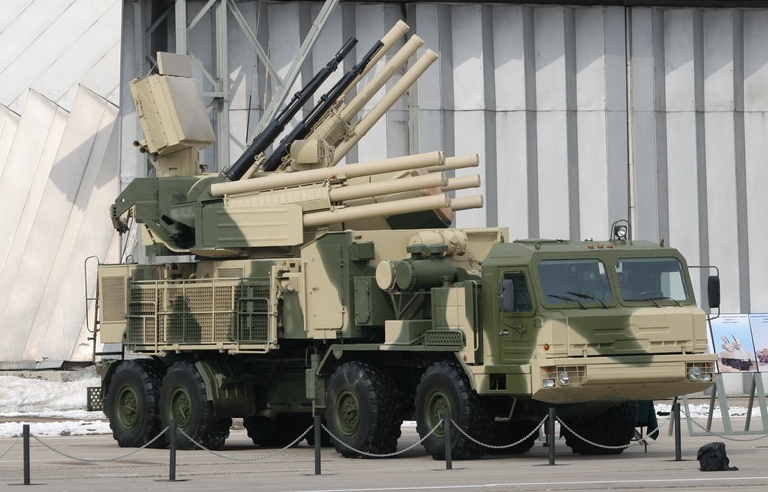
Fully
deployed
72V6
SPAAGM
prototype
on
BAZ-6909
chassis.
This
variant
incorporates a new VNIIRT designed 1RS2-1E agile
beam
phased array engagement radar. The primary design aim for
this system was the interception of PGMs, especially the AGM-88 HARM
and GBUs (Sergei Kuznetsov
via Strizhi.ru).
References
|
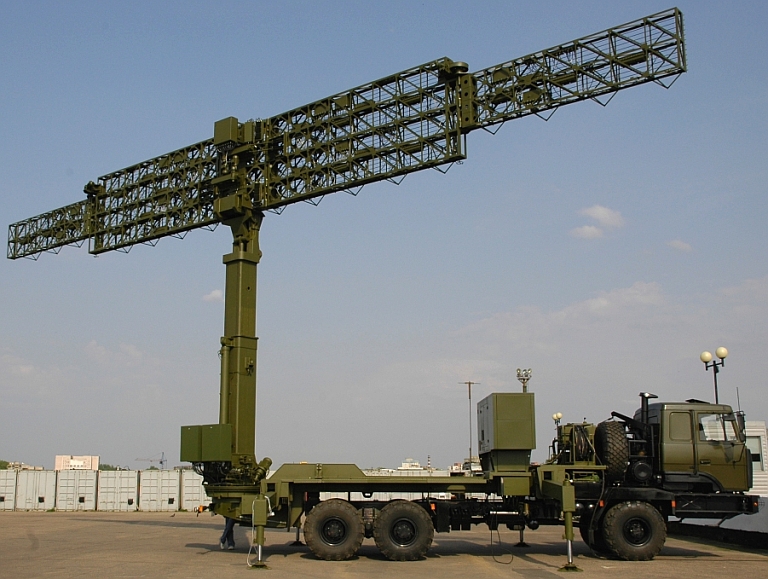
A
VHF-band high mobility Vostok E demonstrator deployed. The folding,
elevating and telescoping antenna can stow or deploy in less than 10
minutes (KB Radar).
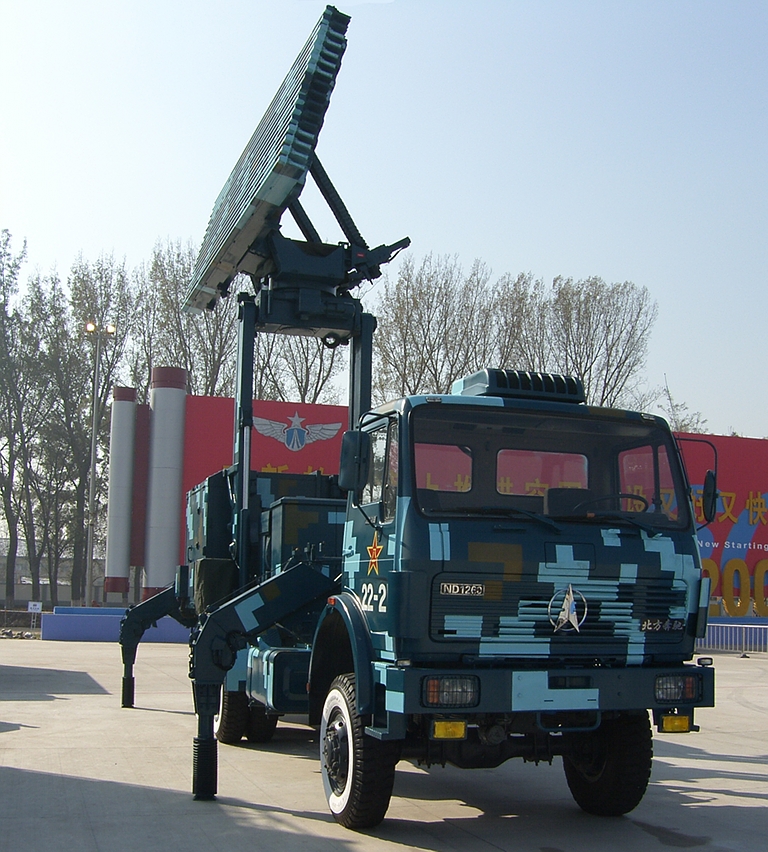
The L-band JY-29/Type 120 (depicted), YLC-18, JYL-1 and YL-11B
are typical of the new generation of PLA self-propelled tactical 3D
acquisition radars, designed to support a range of SAM systems. Mostly
they are carried on licence built Mercedes-Benz chassis, and often
employ complex elevating mast systems (© 2009,
Bradley Huang).
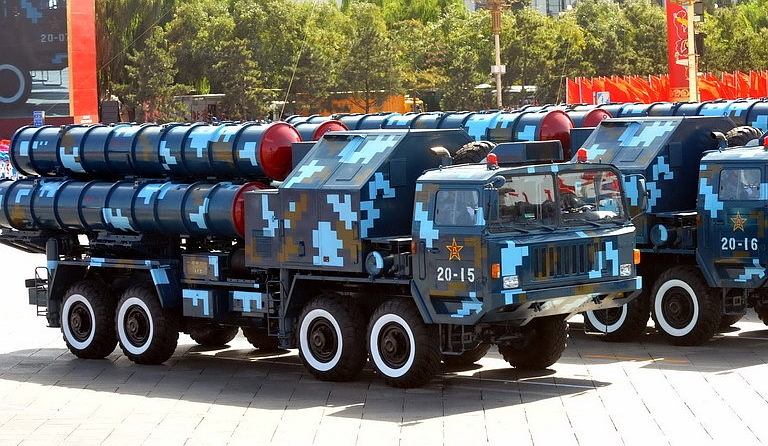
HQ-9 TEL using the Taian TAS-5380 chassis (via Chinese Internet).

Early TAS5380 TEL on
display at Datangshan. The design is modelled on the MAZ-543/7910
series (Zhenguan Studio, © 2010 Air Power Australia).
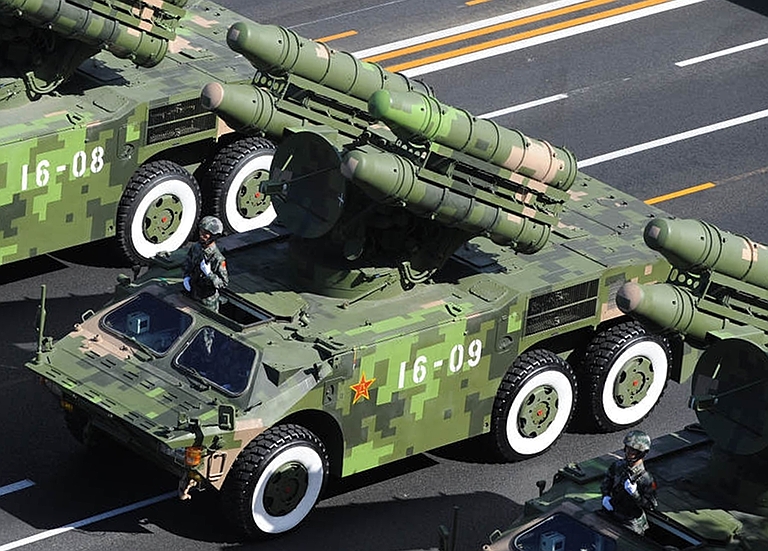
New
design HQ-7B/FM-90
TELAR
on
parade
in
2009
(via
Chinese
Internet).
Technical Report APA-TR-2008-0601
|
|||||||||||||
![Sukhoi PAK-FA and Flanker Index Page [Click for more ...]](APA/flanker.png) |
![F-35 Joint Strike Fighter Index Page [Click for more ...]](APA/jsf.png) |
![Weapons Technology Index Page [Click for more ...]](APA/weps.png) |
![News and Media Related Material Index Page [Click for more ...]](APA/media.png) |
||||||||||
![Surface to Air Missile Systems / Integrated Air Defence Systems Index Page [Click for more ...]](APA/sams-iads.png) |
![Ballistic Missiles and Missile Defence Page [Click for more ...]](APA/msls-bmd.png) |
![Air Power and National Military Strategy Index Page [Click for more ...]](APA/strategy.png) |
![Military Aviation Historical Topics Index Page [Click for more ...]](APA/history.png)
|
![Information Warfare / Operations and Electronic Warfare Index Page [Click for more ...]](APA/iw.png) |
![Systems and Basic Technology Index Page [Click for more ...]](APA/technology.png) |
![Related Links Index Page [Click for more ...]](APA/links.png) |
|||||||
![Homepage of Australia's First Online Journal Covering Air Power Issues (ISSN 1832-2433) [Click for more ...]](APA/apa-analyses.png) |
|||||||||||||
| Artwork, graphic design, layout and text © 2004 - 2014 Carlo Kopp; Text © 2004 - 2014 Peter Goon; All rights reserved. Recommended browsers. Contact webmaster. Site navigation hints. Current hot topics. | |||||||||||||
|
Site Update
Status:
$Revision: 1.753 $
Site History: Notices
and
Updates / NLA Pandora Archive
|
|||||||||||||
|
|
Tweet | Follow @APA_Updates | |||||||||||
|
|
|||||||||||||
|
|
|||||||||||||
![F-111 Aardvark Index Page [Click for more ...]](APA/f-111.png)
![F/A-18 Hornet and Super Hornet Index Page [Click for more ...]](APA/fa-18a.png)
![Aerial Refuelling and Airlift Capabilities Index Page [Click for more ...]](APA/aar-lift.png)
![Directed Energy Weapons and Electromagnetic Bombs Index Page [Click for more ...]](APA/dew.png)
![Notices and Updates Index Page [Click for more ...]](APA/notices-128.png)
![APA NOTAM and Media Release Index Page [Click for more ...]](APA/notams-128.png)
![APA Research Activities and Policy / Technical Reports Index [Click for more ...]](APA/research-128.png)
![Search Air Power Australia Website [Click for more ...]](APA/search-128.png)
![Briefings and Submissions - Air Power Australia [Click for more ...]](APA/briefs-128.png)
![Air Power Australia Contacts [Click for more ...]](APA/contacts-128.png)
![Funding Air Power Australia [Click for more ...]](APA/funding-258.png)
